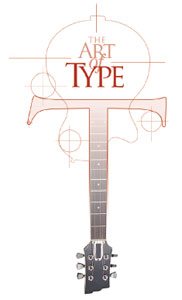Learn to Play the Guitar
 About once or twice a week, I get an email from a reader asking for my advice about something. Usually, it’s either about their career or they need guidance on a big purchase they’re going to make (such as a monitor or a camera); but sometimes they ask me regular stuff, like how to meet girls (I tell them the first step is to buy an electric guitar). So, as you can see from this piece of advice I’ve just dispensed, my counsel (although not necessarily poignant) is nevertheless straight to the point, and is based on years of careful research and thought (or in this case, not).
About once or twice a week, I get an email from a reader asking for my advice about something. Usually, it’s either about their career or they need guidance on a big purchase they’re going to make (such as a monitor or a camera); but sometimes they ask me regular stuff, like how to meet girls (I tell them the first step is to buy an electric guitar). So, as you can see from this piece of advice I’ve just dispensed, my counsel (although not necessarily poignant) is nevertheless straight to the point, and is based on years of careful research and thought (or in this case, not).
Just recently, I got another one of those “most-asked” questions. It was from a woman who was just about to enter the graphic design market (she had some training, but no real professional experience), and she had some serious concerns about how she was going to stand out from the crowd when trying to get a job in today’s competitive market. She asked me what I thought she could do to help her stand out to potential employers.
Now, I’m not the offi cial “International Board of Design Answers,” so I can only give her my personal advice (go back to school and be a doctor), but for the past 11 years I’ve been interviewing and hiring designers for my business, so I do have some experience in crushing the hopes and dreams I mean, carefully evaluating talent and giving these deserving young designers a chance. To my credit, I’ve found some of the most brilliant designers and layout artists in the business, including Felix Nelson, Dave Damstra, and Margie Rosenstein (okay, Felix really found Margie, but after seeing her portfolio, I did say something along the lines of “Dude, she’s the one!” so I feel I contributed on some level).
To my dismay, I’ve also been duped a few times by designers who brought in great portfolios, only to find out later that they played only a small role in the work in their portfolio (like setting the type or importing photos) and that they didn’t actually artdirect those pieces. When this happens, it’s not long (a few hours, perhaps) until the truth comes bounding forth. You give them a simple project (maybe a postcard or a simple ad to lay out) and the moment they hand it to you, you instantly know that they didn’t do the work in their portfolio themselves. Then you start to ask a few probing questions, and before long, they break and start singing like a canary (it could be the sleep deprivation, but I’m still not convinced that’s why they finally fess up). After this happened a few times, I started to hone my portfolio evaluation skills. But I digress.

So, what did I advise this young “designer-to-be” as to the one thing that would help her stand out from the pack? I told her she needed to learn the art of typography. Setting type right is an art, and when it’s done correctly, it really makes a designer’s work stand out from the crowd, especially these days when the art of typography is rarely taught outside of the big design schools. It would give her an edge that would immediately catch the eye of people who know, understand, and appreciate the art of type, such as ad agencies, publications, design shops, etc.
If she opened her own business, most of her clients would never know whether she really understood type, because they don’t understand type. Her clients wouldn’t be able to tell you why her stuff looked so good, so professional, or so much better than the previous designer they were using. They’d just know her stuff looked “right.” That’s the difference that great type control can make.
About six months ago, we were hiring for an in-house video editor position. We had dozens of applicants, but we were able to quickly weed out the bad ones from the most likely candidates by simply inserting the DVDs they had designed and taking a glance at their DVD menu layout. Their use of type was a dead giveaway. And I’m not just talking about “picking fonts.” That’s not typography. That’s picking fonts. Sometimes we didn’t even get past the DVD menu–if it looked really bad (and it’s their fi rst impression), how good could the videos themselves be? The video editors who used type right–who tracked and kerned, followed the rules of typography, knew when to add space and when to take it away, and knew how to use type as decoration and when the type shouldn’t get in the way–those video editors are “the pros,” and that’s what we were looking for–a pro.
Heck, anybody can choose a dissolve or a wipe from a list of transitions, just like any goober can choose a font. The real pros understand type’s place in the overall design. When it needs to shout, and when it needs to whisper. They understand how choosing, or combining, just the right faces can set a mood, convey a message, and change everything. If she could master this, then her work would stand out from the pack of mediocrity and she’d be noticed. People wouldn’t say, “Wow, her type looks great.” It would just be, “Wow, she’s a great designer.
So where should she start? I’d look at The Complete Manual of Typography by James Felici (ISBN 0321127307), which is considered by many to be the book on modern professional typography (it’s not a “font picking” book–it’s about setting type right). If you’re searching online, you’ll fi nd hundreds of books on typography (yes, there are really hundreds of books about typography– it’s that important).
Type is one of those things that can really draw you in, and when studying type, it’s easy to become passionate and involved with typography. I hope she takes my advice and really digs in, because if she does–and makes learning typography a priority– I do believe two things will happen: (1) She will stand out from the pack and will have that “certain something” that helps land her the better job, the better client, and the better life as a designer. And (2) with any luck at all, she’ll eventually meet a nice guy with an electric guitar.

